How were gays and lesbians viewed and treated by the U.S. government?
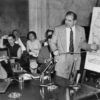
Students will study the treatment of gay and lesbian federal workers during the period of McCarthyism.

Instructional Resources for California Educators, Students, & Families

Students will study the treatment of gay and lesbian federal workers during the period of McCarthyism.
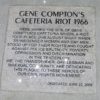
Students will learn about the Black Cat Tavern riots and the start of the gay rights movement.
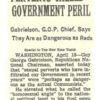
Students will analyze 6 -10 (or more depending on the class) primary and secondary sources. These sources will serve as historical evidence for students as they determine their response to the inquiry question. After students read and annotate each source, they will then collaborate and create a DBQ Poster. The DBQ poster process requires students 1) to sort the sources into 2 or more categories, 2) to consider all historically relevant content and 3) construct a group thesis that directly answers the inquiry question.
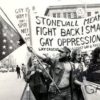
In this lesson, teachers will contextualize the LGBT rights movement by answering the question introduced in the History-Social Science Framework for California Public Schools: “How did various movements for equality build upon one another?” While activists fighting for LGBT rights utilized similar tactics and had some shared goals of those fighting for Civil Rights broadly, LGBT people in racial minority communities faced additional discrimination. Moreover, many fighting for broader Civil Rights did not consider sexual preference or gender identity as apart of their fight. In this lesson, students will explore historical perspectives to determine to what extent the movement for LGBT rights was or was not part of the broader movement for Civil Rights of the 1970s and 1980s. Students will read, annotate and categorize several primary sources to write a short essay describing and supporting their prospective with evidence from the texts.
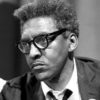
In this lesson, students will examine primary sources to understand how Bayard Rustin’s identity shaped and influenced his actions as a Civil Rights leaders. They will participate in whole group discussions and small group work to deepen their knowledge on who Bayard Rustin is and how his identity as a gay man affected his life as an advocate. They will demonstrate their learning by writing an argumentative essay answering the inquiry question.
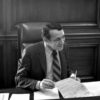
In this lesson, students will analyze the purpose of the Briggs Initiative (Prop 6), which was on the California general election ballot in 1978. The referendum sought to ban gays and lesbians, and potentially supporters of gays and lesbians, from working in California’s public schools. Then, students will evaluate voices of those opposed to the initiative by reading posters and flyers. Harvey Milk, the first openly gay elected official, was a key political figure that led the debate against people like Senator John Briggs and Anita Bryant. Additionally, the Briggs Initiative was challenged by other marginalized groups including African Americans, feminists, and unionists. Finally, students will conduct a close reading of Harvey Milk’s speech given after the defeat of the Briggs Initiative on June 25, 1978 at California’s Gay Freedom Day. The lesson may take 90-120 minutes depending on the reading level of students and the language support needed. To divide the lesson into two days, it is suggested that the close read be done on day 2.
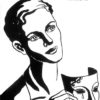
Students will experience strategies that will help them analyze primary sources, examine and use literacy strategies that will help them access primary sources, engage in close reading and text-based discussions in various settings including in pairs/groups and as a classroom and generate at least one writing task that is Common Core based.
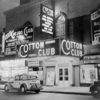
In this lesson, students will learn about changes and continuities in the 1920s, particularly focused on cultural and social areas. Students will analyze primary and secondary sources that explore race, gender, and sexuality in the 1920s.